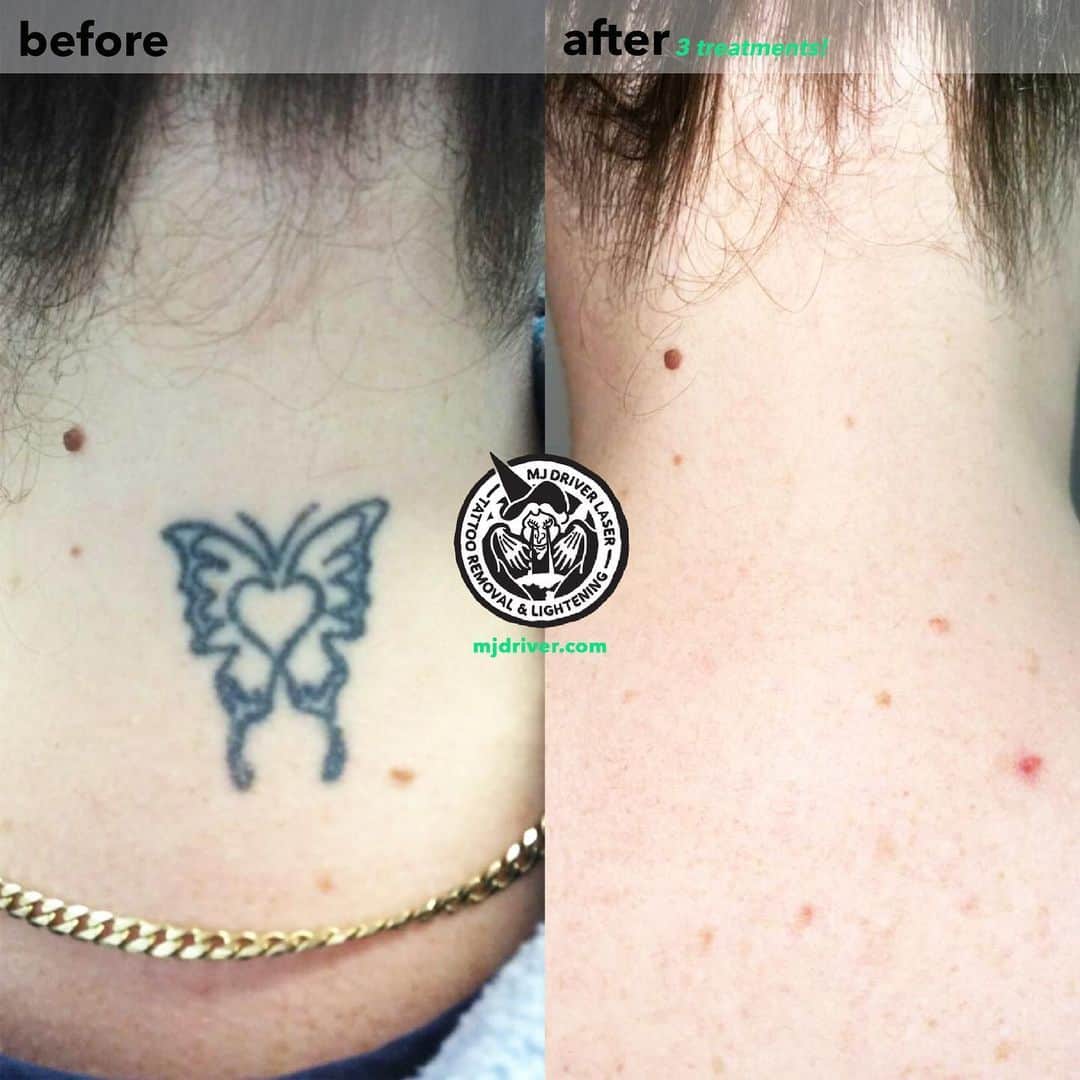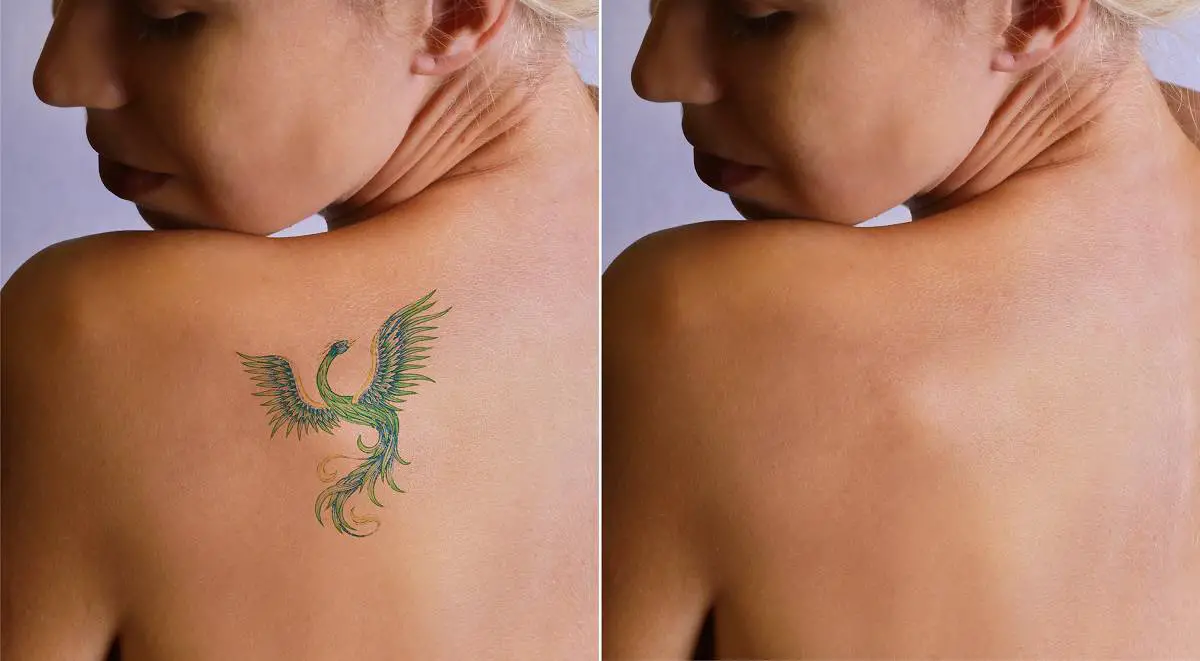The Easiest and Hardest Tattoo Pigments To Remove
Getting a tattoo that you’re dissatisfied with can be a moment when you feel defeated. You’ve spent a lot of money, gone through serious tattooing pain only to be left with a tattoo you don’t like. Luckily, laser tattoo removal is pretty well established and successful in removing and fading tattoos.
Laser tattoo removal is generally the best and the safest method to remove ink permanently.
But, how does the laser remove the ink that is placed inside the skin layers? And, does the color of the tattoo play a role in the effectiveness of the laser removal procedure?
In the following paragraphs, we’ll tackle these important questions everybody wanting a tattoo should ask themselves. So, without further ado, let’s get started!
Laser Tattoo Removal: How It Works?
Before we get into the ink colors and how well they can get removed, we must first discuss the very removal method and how it works.
Laser tattoo removal comprises the use of laser lights, or the photomechanical effect to target the ink in the skin and remove the pigment by dissolving the ink particles. The laser uses infrared light at specific frequencies to target the ink and heat it until it dissolves. Laser tattoo removal is done using Q-switched lasers. The laser works in the following way;
- The laser, infrared light reaches into the skin layer known as the dermis, where the ink is placed
- The ink, then, absorbs the light or the heat from the light
- As the energy from the laser light heats the ink, it starts to dissipate into the surrounding skin
And that’s it. The whole process is pretty simple and straightforward. A laser tattoo removal procedure can take up to 10 sessions for standard-sized tattoos. However, in some cases where the ink is of a specific color or the placement of the tattoos is hard to reach, the laser removal may require up to 20 sessions.
Info: Types of Q-switched lasers used to remove colored tattoos;
- Q-switched Ruby laser – 694nm wavelength for blue, green, purple, lime ink colors
- Q-switched Alexandrite laser – 755nm wavelength for black, green, blue ink colors
- Q-switched ND: YAG laser – between 532nm and 1064nm wavelength for black, dark brown, dark purple, red and deep yellow ink colors
Also Read:
So, Which Ink Colors Are The Easiest and The Hardest To Remove?

Ink Colors Easiest To Remove
- Black and grey ink colors or tattoos are the easiest to removed using the laser removal method. Because black and grey colors absorb the infrared light directly, and heat up quickly, the ink dissipated completely in between 5 to 10 sessions. For the laser to remove a black/gray tattoo, it needs to at the 1064nm wavelength, which also effectively removes ink colors like dark brown, dark purple, and dark blue.
- Red and dark yellow tattoos are the second easiest to remove. Ink colors like red, orange, violet, dark yellows, and browns aren’t as easy to remove as the black or grey ink, but still, they generally don’t require more than 10 sessions (depending on the size and the placement of the tattoo, of course). For these ink colors to be removed, the laser needs to be at the 532nm wavelength. Bear in mind that the lighter the yellow, the harder it is to remove.
Dark inks and warm-toned colors respond pretty well to the laser light and the heating effect. For example, during the summer it is not recommended to wear black or dark-colored clothes during the daylight because these colors absorb the heat and make you feel much warmer than you normally would. A similar thing happens with the laser and the dark, warm-toned ink colors.
And Which Ink Colors Are More Difficult To Get Rid Of?
- Blue (light blue is the most challenging to remove)
- Green (darker green shades are easier to remove than the lighter shades)
- Purple (light to medium purple is pretty difficult to get rid of)
- Turquoise
- Lime green
- Teal
- Neon-colored inks
These require laser light between 694nm and 755nm, which are the wavelengths of barely visible red light. These wavelengths do target the aforementioned colors most effectively, but with significantly less power than what would be required for black ink, for example. The same applies to brighter or neon colors as well.
We would say that white ink is the hardest to remove. It doesn’t absorb any of the infrared light. There have been cases where white ink tattoos turned dark after a laser removal procedure.
If Laser Removal Fails, What Then?
With lighter tattoos, chances are you’re going to experience some difficulties with either the very removal or the wish to achieve proper results. In such cases, it is fair to say that laser tattoo removal might fail. So, what then?
Now, even though laser tattoo removal is considered the safest, most efficient tattoo removal method, there are other removal methods you can consider as well;
- Surgical Removal
Sometimes a tattoo itself, or one’s skin condition don’t make a suitable candidate for laser tattoo removal. In that case, you’d be recommended to go for surgical removal, also known as surgical excision. This comprises your tattooed skin being cut out.
As a result, you’re left with a scar (which heals wells and becomes barely visible) in the place where the tattoo once used to be. This method is recommended for smaller tattoos. However, it is considered to be an aesthetic procedure, so it is not covered by insurance.
- Dermabrasion or Tattoo Sanding
If laser removal and surgical tattoo removal don’t sound appealing to you, then maybe you should try dermabrasion. This is a sanding method, where via a sanding device one is removing the skin layers until the sand reaches the ink. Regardless of the color of the ink, the sand ensures the ink simply leaves the skin since there is no skin left to hold it in place.
Now, we believe this is a pretty drastic measure and we surely do not recommend it. It can also be pretty damaging to the skin and in the long run, might not be even that effective to justify the risk.
The Best Tattoo Fixing/Removal Method (Alongside Laser Removal)
If you want a good way to replace a bad tattoo without undergoing surgery or risky procedures, or removing it completely with a laser, you should consider simply covering it up.
Now, tattoo cover-up can vary in effectiveness, as it depends on the size of the current tattoo, the design, and the color scheme. This can be a good option for people who want to get rid of their lighter tattoos since a cover-up tattoo will turn out slightly darker than the original design.
However, covering one tattoo with a new design might not be the best solution for people who want to get rid of the tattoo completely. But for those who simply want a bigger, better design, they should surely consider this method.
To see whether your current size and ink color are suitable for a good tattoo cover-up, make sure to talk to a professional tattooist who is specialized in tattoo cover-ups. Always opt for professionals and tattooists experienced in tattooing over an existing tattoo.
Let’s Quickly Talk About Picosecond and Nanosecond Laser Technology
To wrap this topic up, we’ve decided to mention a few words regarding the picosecond and nanosecond laser technology in regards to laser tattoo removal. You may have heard about these technologies and now you wonder whether they work better in regards to different pigments than the regular lasers.
Pico laser technology is the latest development in the world of laser tattoo removal. The hype around this, so-called Picosure laser technology is huge. The claims are that it works quickly, thoroughly and manages to get rid off of any tattoo pigment. But, is that the case?
During our research, we’ve come across a study, published in 2013 in the Journal of Laser and Health Academy. The study tackles the possibility of a Picoruse laser replacing the nanosecond laser. What the study concludes is the following;
The Picosecond laser technology isn’t any better than the standard laser technology used for tattoo removal. The gold standard of laser tattoo removal is still the Q-switched laser (which belongs to the nanosecond laser family).
So, in case someone tries to sell you the idea of better tattoo removal with a Picosecond laser, try to politely turn it down. Go with standard laser removal, and always choose experts and reliable professionals to do this job.
Final Thoughts
We would be lying if we said that laser tattoo removal will be 100% efficient against all kinds of ink colors and pigments. The truth is, it will work better on darker tattoos, and not as good on lighter tattoos. That is just the physics of the infrared, laser light. However, when done by a professional, and after a certain number of sessions, you may notice the tattoo disappearing, successfully.
For more information about ink colors and laser removal, make sure to talk to a laser removal expert. They will examine your tattoo, the color scheme and let you know right away what to expect from the treatment/procedure.
Also Read: Colored Tattoos Vs. Black & Grey Tattoos: Which Tattoo Style Is Better For Your Next Ink?
- Safe, non-toxic plant-based temporary tattoos made with 100% high-definition printing for a realistic look without the pain
- Easy to apply and remove - just stick for 20 seconds then take off
- Set includes 5 sheets with 17 fun, delicate designs like hearts, cats, smiles, suns, moons, and more
- Waterproof and long-lasting - stays on up to 2 weeks of wear
- Fashionable for women, men, girls and boys
- Place on arm, wrist, neck, leg, finger, waist, foot and more
- Great for parties, birthdays, and showing your unique style








